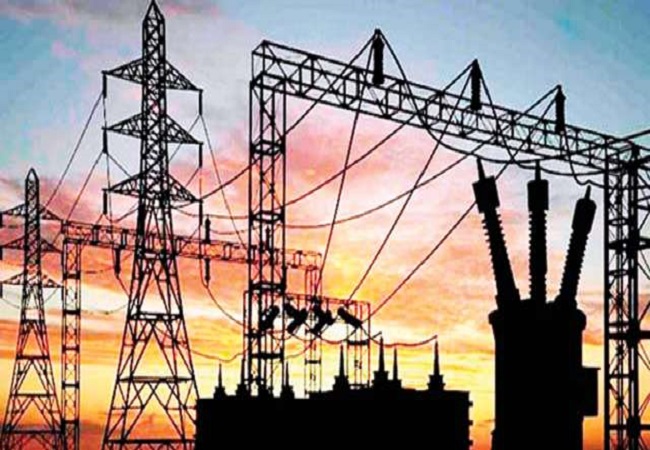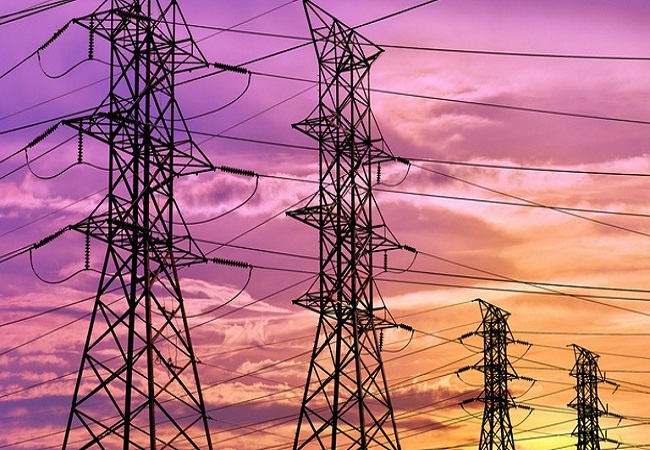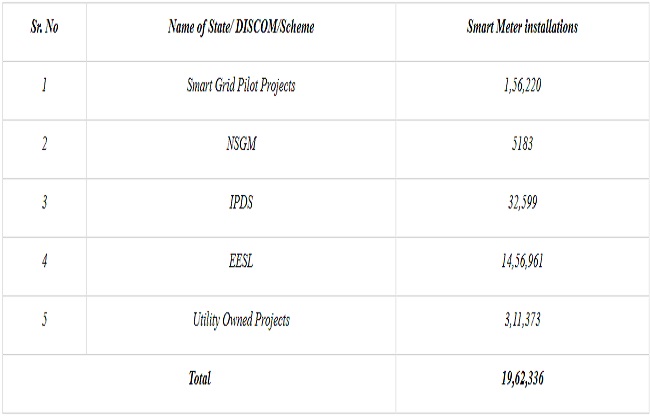
New Delhi: Lighting up villages and remote areas while ensuring abundant and uninterrupted power supply in urban areas has been one of major priorities of Modi government. Several schemes and initiatives have been launched and implemented in last few years of NDA regime to meet this objective.
In Year 2020, the government pushed ahead with reforms like One Nation-One Grid-One Frequency while pushed schemes like Gram Jyoti Yojana and Sahaj Bijli Har Ghar Yojana with renewed vigour.
Days ago, rules were framed to penalise Power discoms if there is any disruption in power supply.
A look at Power Ministry’s schemes to light up India:
Deendayal Upadhyaya Gram Jyoti Yojana (DDUGJY):
Govt launched Deen Dayal Upadhyaya Gram Jyoti Yojana (DDUGJY) scheme with total outlay of Rs.75893 Crore (DDUGJY: Rs.43033 crore and RE Component: Rs. 32860 crore). Projects with total cost of Rs 44,416 crore have been sanctioned in 33 States/UTs. Besides, additional amount of Rs14,270 crore has been sanctioned for creation of additional infrastructure to support 100% household electrification.
Rural Electricity Infrastructure
As on 30.11.2020, 1754nos new sub-stations are commissioned; 2142nos sub-stations are augmented; 5,75,115nos distribution transformers are installed; 4,91,338 Kms of LT lines and 2,03,085 Kms of HT lines (11 KV and 33 KV) are erected and 1,22,049 Kms feeder separation completed. Besides, metering of 1.48 crore consumers, 2,08,924 Distribution Transformers and 13,190Feeders have been completed.

Integrated Power Development Scheme (IPDS) (as on 13.11.2020):
• Integrated Power Development Scheme (IPDS) was launched in the year 2014 with an Outlay of Rs. 32,612 crore for improving and augmenting the distribution and sub-transmission systems in Urban areas with a view to improve reliability.
• Under the scheme, system strengthening of sub-transmission and distribution network has been completed in 448 circles cumulatively covering over 3000 towns. The major achievements are as follows:
o 927 new 33/11 kV Power Sub-Stations (PSS) commissioned; Capacity augmentation of more than 1500 exiting PSS completed
o Over 33,000 ckm of new overhead lines charged for better power reliability
o More than 75,000 ckm of Underground/Aerial Bunched cables laid to reduce losses
o About 56,000 new Distribution Transformers charged for improving power supply in towns
o Around 45 Mwp of Solar Panels installed on Govt buildings and Substations as contribution towards green energy
o More than 1.15 lac Smart Meters installed
• All Smaller Towns have been IT-enabled under IPDS in AP-East, Telangana & Uttarakhand for improved consumer services etc. For better work flow management in the Utilities, IPDS has also funded Enterprise resource planning (ERP) across several Utilities, out of which implementation has been completed in 11 Utilities. 98 Gas Insulated Switchgear (GIS) Substations are under progress in various States
• Under the older projects subsumed under IPDS, all 1290 towns have been IT enabled, and SCADA systems have been completed in 57 towns. System strengthening works have been completed in 1197 towns.
• Though the progress of IPDS was affected by COVID-19 pandemic, the physical progress reached more than 90% for the system strengthening works in the current year. The details of the works accomplished under IPDS in new projects in the current calendar year are as follows:

Pradhan Mantri Sahaj Bijli Har Ghar Yojana (SAUBHAGYA):
Govt of India launched Pradhan Mantri Sahaj Bijli Har GharYojana – Saubhagya in September, 2017 with the objective to achieve universal household electrification by providing electricity connections to all willing un-electrified households in rural and all poor households in urban areas across the country, by March, 2019. All States have declared electrification of all households on Saubhagya portal, except 18,734 households in LWE affected areas of Chhattisgarh as on 31.03.2019. Electricity connections to 262.84 Lakh households have been released from 11.10.2017 to 31.03.2019.

Subsequently, seven States reported more un-electrified households which were un-willing earlier, later willing to get electricity connection, identified before 31.03.2019. States have been asked to electrify these households under Saubhagya.
As reported by the States, 280.89 lakh households have been electrified since 11.10.2019 up to 30.11.2020 under Saubhagya. As on 30.11.2020 an amount of Rs. 6,220.23 crore has been released as GoI grant for implementation of Saubhagya. During the year 2020-21, as on 30.11.2020 (i.e., from 01.04.2020 to 30.11.2020), electricity connections released to 4.13 Lakh Households.
Smart Metering:
• In the current financial year, Ministry of Power has issued guidelines to all States to convert all existing consumer meters into Smart meters in prepaid mode. Operation of Smart meters in prepaid mode would allow consumers to pay as per their own financial convenience and electricity consumption requirements.
• EESL, a JV between CPSUs in the power sector, has been providing Smart metering services to various Utilities as per MOUs entered into with them. EESL has also established innovative financing arrangements for the Smart metering projects that would enable them to provide smart metering services to the DISCOMs without requiring any outright CAPEX funding from the States/Utilities. The recoveries against the funding towards smart metering installations would be taken as a monthly annuity from the Utilities over a period of seven to eight years.
• Apart from installations in NDMC for about 50,000 consumers, EESL has also started installation of Smart meters in Haryana, Uttar Pradesh, Bihar and Rajasthan. Out of these States, the maximum installation is in the State of Uttar Pradesh, where more than 7.78 Lakh smart meters have already been deployed across 11 cities.
• More than 19 lakh smart meters have been installed in the country as detailed below:

One Nation-One Grid-One Frequency:
• During 2020 (upto October 2020), 11921 ckm of transmission lines (220 kV and above) has been added.
• During the same period, Transformation capacity addition is 35,760MVA
• Inter-Regional Transfer capacity of addition during 2020 (upto October 2020) is of 3,000 MW (during 01.01.2020 to 31.10.2020)
During 2020 (upto October 2020) MoP has approved implementation of ISTS transmission projects with estimated cost of Rs. 25945.3 crore under RTM/TBCB mode.
Major Transmission Projects Commissioned in till Oct 30, 2020
• Pole 4 of Champa and Kurukshetra HVDC Station have been commissioned in Mar’20,thus adding 1500 MW of interregional capacity in the year 2020.
• 765 kV D/C Chilkaluripeta – Cudappah line (577 Ckm), 765 kV D/C Vemagiri – Chilakaluripeta line (558 Ckm) and 765/400 kV, 3000 MVA Chilakaluripeta S/S, all these projects awarded through TBCB route, have been commissioned in Jan’20.
• 800 kV HVDC Raigarh (HVDC stn) – Pugalur (HVDC stn) Bipole Link (3531 Ckm) has been commissioned with Raigarh and Pugalur Station HVDC Terminal (Pole-I) charged in Sept’20, thus adding 1500 MW of interregional capacity during FY 2020-21.
• Alusteng-Zainakote 220kV D/c transmission line having length of 45 Km was commissioned on 15.02.2020 by JKPTCL, which is funded under Prime Minister’s Reconstruction Plan (PMRP-2005). With these lines, 220kV Transmission System for inter-connection of Zainakote -Alusteng (Srinagar) – Lehhas established 220kV connectivity with Northern Grid and would provide reliable power supply to the strategically important Ladakh region, which is also an area of defence establishment.
• LILO of 220 kV D/C Zainkote-Delina line at Kunzar (length =20km) and 220/132kV, 320 MVA Alusteng Sub-stationhave been commissioned in Feb, 20.
Impact of Energy Efficiency Schemes / Programmes
• Electrical energy savings of 136.37 Billion Units, worth INR 67,039 crores
• Thermal energy savings of 12.00 Million Tonnes of oil Equivalent, worth INR 22,083 crores
• Total energy savings of 23.73 Million Tonnes of oil Equivalent i.e. 2.69% of total primary energy supply of the country
• Total cost savings worth INR 89,122 crores approximately which is equivalent to reduction in CO2 emission of around 151.74 Million Tonnes





